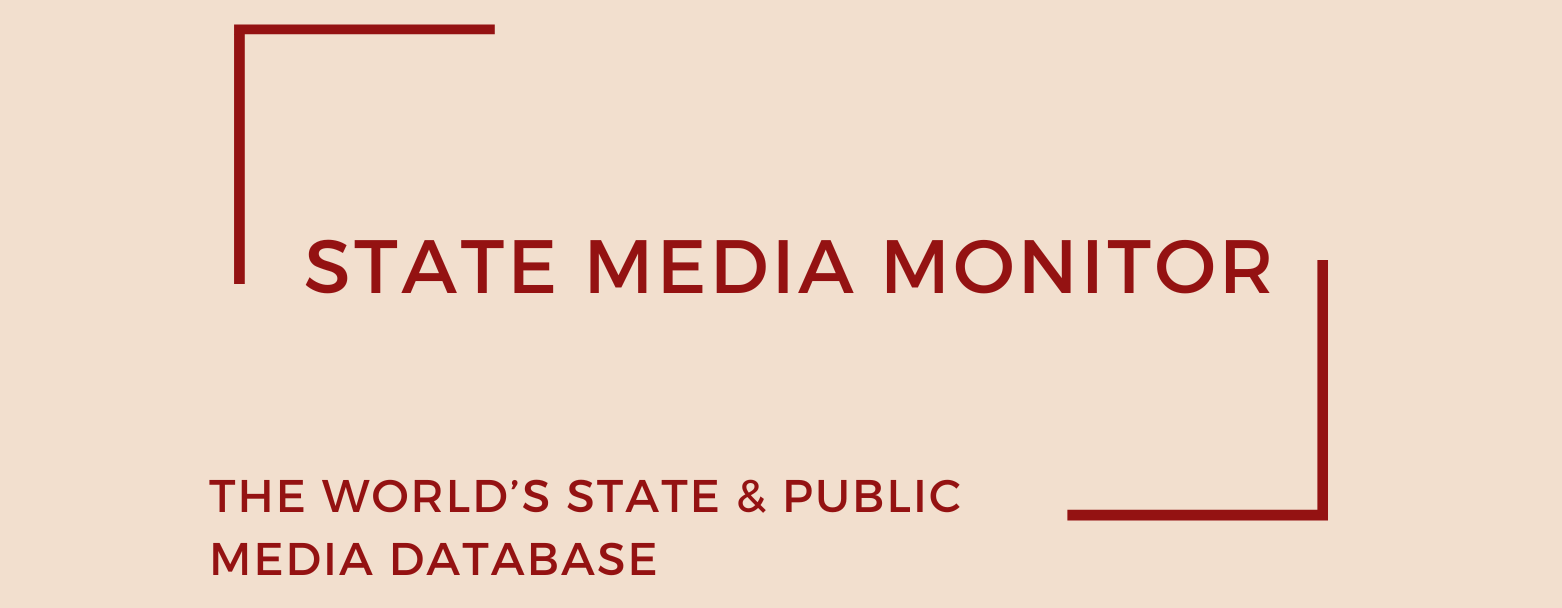Key Findings of State Media Monitor 2024 Published
The number of media outlets falling under government control continues to grow, while the independent public media sector is facing new threats.
The government maintains a firm grip on state and public media, with over 84% of the 601 state-administered media companies in 170 countries covered by the State Media Monitor exhibiting a lack of editorial independence. This represents a slight increase of 1% compared to the previous year. The inclusion of 13 additional countries in the 2024 State Media Monitor edition has led to the discovery of an even greater extent of government control over state and public media outlets across the globe.
The state-controlled (SC) model, encompassing media outlets that are wholly owned and operated by the government, which has a big say in their editorial agenda, continues to be the dominant model globally. Our analysis indicates that approximately 65% of all state and public media outlets monitored in the project fall within this category. The SC model accounts for approximately 77% of the 505 state and public media outlets lacking editorial independence. The remaining 13% are represented by captured media, either private or public media that have been influenced by the government (for a detailed explanation of the differences between the various forms of editorial control by the government, refer to our Methodology and Matrix).
The dominance of government-controlled media is further reinforced when we consider the overall portfolios of assets they hold. Our analysis revealed that the 601 state and public media outlets monitored by the State Media Monitor collectively possess nearly 7,000 media assets, including television and radio channels, print publications, news agencies, and news portals.
The current state of state and public media can be further assessed by analyzing the number of media outlets that still maintain editorial independence. In 2024, a total of 96 state and public media outlets were editorially autonomous, representing a decrease of three outlets compared to the previous year. This is an even more significant decline when considering that we added 13 more countries to the analysis in 2024. Of those, only 18 media outlets were categorized as Independent Public (IP) media, representing the pinnacle of independence within the public media sector. A total of 13 of the aforementioned outlets are located in Europe, with nine of them situated in Western European countries. The four non-Western independent public media in Europe are RTP in Portugal, Czech Television, and the public broadcasters in Lithuania (LRT) and Slovenia (RTVSLO).
However, the future of independent public media in Europe remains uncertain. Attacks by political groups, particularly right-wing parties, on public service media have persisted. While the victory of the Labour Party in the UK elections in July 2024 is anticipated to be favorable for the BBC, challenges to the license-based funding model of the broadcaster persist as the corporation undergoes a significant restructuring of its operations. In a separate development, the victory of the far-right Freedom Party in the Austrian elections in September 2024 is anticipated to result in significant challenges for Austria’s public broadcaster ORF. Right-wing parties in Austria have previously indicated that, should they assume power, they will seek to reduce the budget of the ORF, which could have an adverse impact on its operational and editorial independence.
Europe is also witnessing a notable shift towards a state-controlled model, which is a first for the region. The number of media outlets in the state-controlled (SC) model in our Matrix, representing the form of absolute state-controlled media, has increased from 24 in 2023 to 31 in 2024. The government’s significant control over private media in countries like Hungary, Serbia, and Turkey further complicates the situation.
It is a troubling trend to observe the gradual decline of the public service model on a global scale. In five other regions of the world—Eurasia, sub-Saharan Africa, Latin America, the Middle East and North Africa (MENA), and Oceania—no independent public media outlets have been identified.
Concurrently, the state-controlled model is predominant in numerous regions worldwide, with its prevalence on the rise, albeit modestly. The SC model accounts for 86% and 83% of all state and public media in Sub-Saharan Africa and Eurasia, respectively. They are followed by Latin America and the Caribbean, Asia and MENA (for more regional insights, read our Regional Overviews).
The majority of changes in our typology over the past year indicate an overwhelmingly negative trend. Of the 14 media outlets whose typology changed in 2024, only two indicate an improvement: Polska Press in Poland, a publisher that the newly elected government has released from its editorial control, and Corporación State de Radio y Televisión (CERTV) in the Dominican Republic, which has significantly enhanced its editorial coverage over the past year.
In contrast, over the past year, we have observed a series of reversals in terms of editorial independence in countries across the globe. In Slovakia, the public broadcaster STVR (formerly RTVS) has been captured by the new regime of Robert Fico. In Thailand, the Thai PBS has begun to succumb to censorship by the government. In South Korea, the public broadcaster KBS has been the target of an unprecedented concentrated attack by the government aimed at controlling its governance. A comparable pattern has emerged among regional television broadcasters in Spain, with public broadcasters in Catalonia (CCMA), Canaries (RTVC), Aragon (CARTV), and Ceuta (RTVCE) all experiencing a loss of editorial independence due to heightened control by regional governments.
State and Public Media: Where To Next?
There has been minimal improvement in the state and public media sectors over the past year. Indeed, there has been an observable trend towards increased government control, with numerous broadcasters experiencing direct influence on their editorial content from government pressures and intervention.
As global conflicts and wars persist, the government’s involvement in state media has grown, resulting in increasingly fierce competition between a growing number of propaganda narratives from a series of regimes. The competition for control of the narrative has sharpened further as a result of the elections that took place in more than 50 nations during 2024. In addition to governments, political actors and private businesses have also been vying for influence in this area. According to the State Media Monitor, less than a quarter of all countries experiencing elections in 2024 have independent state and public media outlets with editorial autonomy, which has posed significant risks to the integrity of the news ecosystem around these political processes.
Europe remains the most diverse media market in terms of state and public media, with the highest number of independent outlets globally. However, Europe is also witnessing an intensifying conflict between political forces seeking to dismantle and destabilize public service media in their efforts to gain control of these outlets, some of which enjoy high levels of public trust and support. Moreover, in addition to direct government control, numerous European countries, particularly in Eastern Europe, continue to experience high levels of media capture. In these instances, private companies that receive financial or other forms of support from the government exercise considerable influence over numerous privately owned media outlets, directing them to align with the government’s agenda.
In other parts of the world, state authorities continue to exert significant control over the state and public media landscape. In some countries, particularly nations across Sub-Saharan Africa, the lack of a functional media market leaves media companies vulnerable to state pressures and influence. In many countries in the MENA region, the government has consolidated its control over the largest media companies in operation. While Latin America and the Caribbean exhibit a more diverse state and public media landscape, the region is also impacted by the prevalence of state-controlled media, which represent 77% of all state and public media outlets surveyed in the region.
The competition for global information dominance is also intensifying, with governments ramping up their efforts to establish influential news outlets for disseminating their messages in the international communication landscape. A number of countries, including the United States, the United Kingdom, France, China, Russia, and Turkey, are investing significant resources in enhancing their news operations with the objective of reaching audiences outside their domestic markets. Their scope and reach are extensive and continue to expand, making them challenging to map and analyze in some cases.
China and Russia, the world’s authoritarian superpowers, have extensive state-run media operations that have expanded across the globe. We believe that their reach extends far beyond the scope of the State Media Monitor’s tracking capabilities. In addition to state-financed media, the two countries have also increased their networking efforts with the goal of forming alliances with media outlets in various countries. China, for instance, has been highly active in leveraging its media companies to extend its reach by entering into collaboration agreements or providing financial assistance to state media outlets across numerous countries in Africa and Southeast Asia, as evidenced by our analysis.
These developments indicate a further reinforcement of the government’s centrality within the global media ecosystem. In numerous countries across the globe, governments are transitioning from their traditional roles as centers of power and influence to a more direct control over the production of news. This shift has resulted in news production strategies being formulated within government offices, with state media and their journalists assuming the role of mere executors. These developments are likely to result in the further suppression of independent media and journalism, as well as a renewed emphasis on propaganda narratives that have a detrimental impact on the health of the infosphere in many of our societies.
Government control over state and public media
Editorial independence of state and public media
State Media Monitor Resources
Typology: see how we classify state and public media outlets (State Media Matrix)
Methodology: see how we collect data to be able to classify state and public media outlets
Regional overviews: see more detailed analysis about how state and public media perform in their region
Global list: find the state and public media you are interested in by checking checking our state and public media list
Read the key findings of the State Media Monitor in the past years
2023 Global Analysis of State and Public Media
2022 Global Analysis of State and Public Media
Photo: Licensed by Unsplash+
Citation (cite the article/profile as part of):
Dragomir, M. (2025). State Media Monitor Global Dataset 2025.
Media and Journalism Research Center (MJRC).
Zenodo.
https://doi.org/10.5281/zenodo.17219015
This article/profile is part of the State Media Monitor Global Dataset 2025, a continuously updated dataset published by the Media and Journalism Research Center (MJRC).

